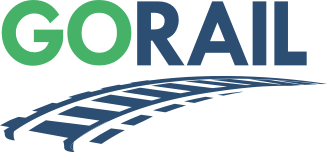The modern world is fast-paced, interconnected and competitive. So is freight rail.
Railroads apply cutting-edge technology across the entire freight rail network — from tracks to trains and everything in between — enabling a 200-year-old industry to deliver for the U.S. economy in the 21st century.
Privately owned freight railroads have spent and invested more than $660 billion on upgrades to their infrastructure and equipment since 1980, making America’s freight rail network the finest in the world. Much of these funds have been dedicated to the development, adoption and implementation of new technologies aimed at making freight rail safer, more environmentally friendly and more efficient.
Today’s railroads rely on smart sensors that constantly monitor the health and integrity of railcars, locomotives and track, ensuring all parts of the network are at safe and optimal performance. Data and analytics identify maintenance needs, which helps railroads improve safety and better serve customers. Fuel management systems, improved fuel efficiency and cleaner locomotives also minimize rail’s carbon footprint.
The benefits of these advances extend far beyond the 140,000-mile rail network. Automakers, energy producers, farmers and other important American industries have benefited from rail’s use of technology, which allows them to move more products faster and more affordably than ever before.
Big Data, Smart Sensors and the Safest Network Ever
Using a combination of smart sensors, industry-wide data sharing and advanced analytics software, railroads monitor the health of the rail network and equipment in real-time. This data enables railroads to spot patterns, predict problems and improve safety.

- Ultrasound, radar and the foundation of rail safety — Tiny flaws imperceptible to the human eye can lead to accidents, so railroads rely on technology, such as ultrasound and radar, to look deep inside a track. Similarly, ground-penetrating electromagnetic radar allows railroads to assess the health of ballast and detect any abnormalities, such as water intrusion, which can cause erosion.
- Data-sharing and the big picture — The Asset Health Strategic Initiative (AHSI) was launched by railroads to track the health of the nation’s 1.6 million railcars. Thousands of smart sensors monitor the integrity of railcars and, as part of AHSI, this data is fed to Railinc, an industry-owned information technology and services company. Railinc uses software to glean insights, taking a bigpicture view to identify patterns, predict problems and guide component manufacturing.
- PTC, a high-tech solution to combat human error — Positive Train Control (PTC), a transformative technology designed to automatically stop a train in cases involving human error, will not only help to prevent accidents, it will also serve as the foundation for future innovation to enhance the safety and efficiency of the network. By the end of 2018, Class I freight railroads will have all hardware installed, all spectrum in place, all employees trained and at least 80% of PTC-required route miles in operation, well beyond the 50% mandated by the federal government.
Rail Technology Lifts Other Industries
Rail technology allows railroads to move more goods faster and more affordably than ever before, providing clear benefits to customers.
- Software calibrates train trips by the minute — Freight rail dispatchers use advanced trip-planning software to develop ideal routes for trains traveling in a region. The software analyzes a train’s schedule, the area’s topology, speed restrictions, the crew’s schedule and other factors, using an algorithm to determine the best plan for each train to follow over the next eight hours — and shares it with dispatchers.
- Preventative maintenance keeps trains moving — With wayside detectors identifying problems on passing trains, railroads can react quickly, preventing bigger fixes or even accidents. By performing maintenance early, railroads are able to prevent disruptions in service and create a fluid, seamless system.
- Maximizing efficiency minimizes costs — North American rail rates are the lowest in the world. U.S. freight rail rates (measured by revenue per ton-mile) are well below those in Europe, China and Japan. This gives U.S. industries a significant competitive edge in the global marketplace.


